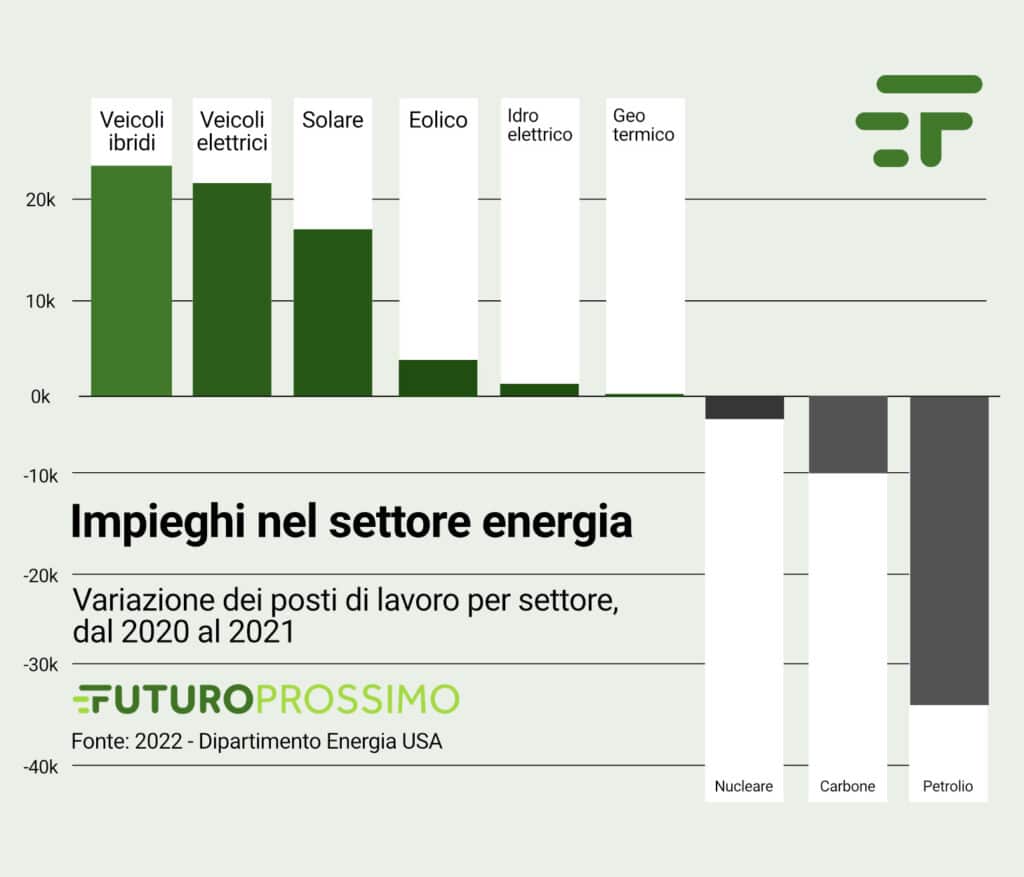If we only look at the employment prospects, 2021 was a great year for renewables. A newly published report from the US Department of Energy says that almost every sector of the green sector has increased the resources used. In contrast, the oil and gas sector had another robust decline in employment (some companies as much as 12%), despite an increase in production. An ecological transition, but also a working one.
In total, jobs in the energy sector grew by around 4%: we are talking about 300.000 more workers. A good result, which masks the losses on the "fossil" side: oil and coal companies have lost almost 40.000 workers.

Does ecological transition equal occupational transition?
The growth of "green transport" has had significant effects on the job market, in many cases also revitalizing industries in the automotive sector that had seen a reduction in employment over time. A good signal, which however must be contrasted with some incontrovertible data.
First: much of the energy sector is still in bad shape: apart from the automotive sector, no other sector is at higher levels than pre-pandemic levels. And on the subject of energy production, only wind power is "blowing" stronger winds than 2019.
For this reason the trend could be temporary, and not confirmed this year. With open conflict in Ukraine causing fossil fuel prices to skyrocket, employment could rebound alongside supply.
Aside from the contingency, however, the general picture says that this transition will be consolidated. Renewables will end up "draining" the jobs that fossil industry companies currently occupy.
Improvements in clean energy solutions and energy efficiency initiatives to build a more sustainable and resilient future will take the lion's share over the next 10-20 years.


